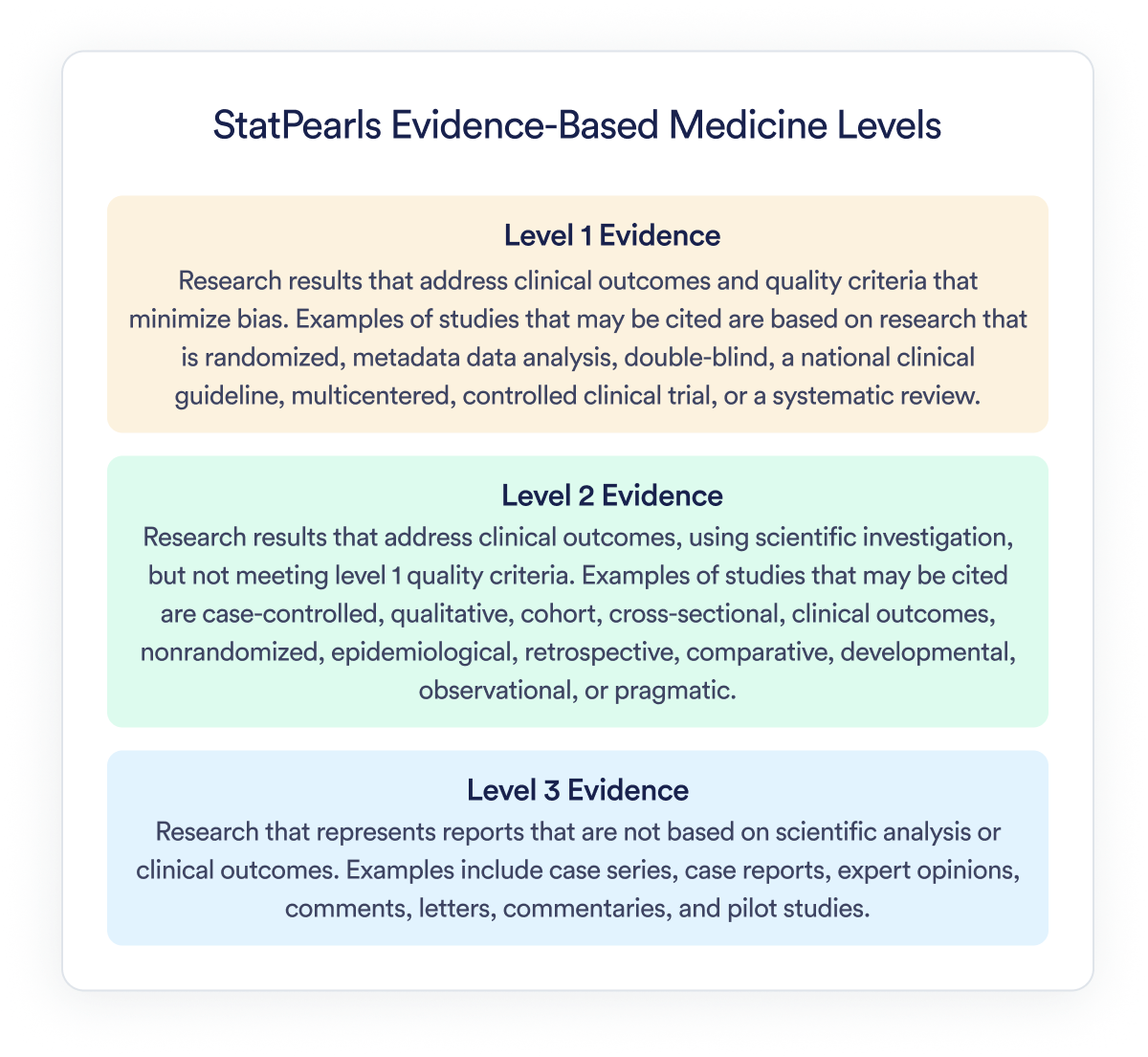StatPearls Editorial Policy
Editorial Structure and Oversight
- StatPearls covers a wide range of medical specialties and subspecialties, each overseen by an editor-in-chief, a prominent clinician in that field; board-certified or eligible editors; and attending, fellow, resident, and student authors. In addition, in-house physician editors and copyeditors assist contributors in the editorial process.
- The editors-in-chief have developed a comprehensive table of contents for each specialty based on board and certification blueprints, ensuring all topics are covered for both specialists and subspecialists.
Continuous review and adaptation of the table of contents is performed to reflect the evolving nature of medical fields. - Contributors are selected for their expertise in specific topics and are responsible for writing and updating content in collaboration with in-house editors.
Conflict of Interest Policy
- All contributors undergo a thorough conflict of interest evaluation to ensure content remains unbiased.
- Contributor disclosures are transparently presented on each topic.
Content Creation and Review Process
- Original content is mandatory, created and edited by contributors, and reviewed by in-house editors for adherence to editorial standards.
- The review process includes ensuring clarity, clinical relevance, and alignment with common clinical questions and evidence-based guidance.
Continuous Updating
- StatPearls articles are updated continuously reflecting the latest clinical data and research. The minimum is all articles are reviewed on a 3-year cycle.
- Important updates are highlighted for easy access and reference.
Review Process
- Multiple layers of review, including internal, external, and anonymous peer reviews, ensure quality, clarity, and the absence of commercial bias.
- User feedback is considered for content refinement.
Prohibition of Generative AI In Article Content
- Using artificial intelligence in creating clinical and basic science articles is strictly prohibited to uphold originality and editorial standards.
- AI is used to identify possible corrections of grammar, spelling, and punctuation, and improve readability.
Additional Content Types
- Additional synthesized content, such as patient handouts, may be derived from the main topics.
Evidence and Recommendation Grading
- Two-level grading of recommendation grading:
- Level A: Strong recommendations: Benefits outweigh the risks
- Level B: Weak recommendations: Benefits and risk equivocal or uncertain
- Three-level grading of evidence
- Level 1: (High-level) evidence [Research results that address clinical outcomes and quality criteria that minimize bias. Examples of studies that may be cited are based on research that is randomized, metadata data analysis, double-blind, a national clinical guideline, multicentered, controlled clinical trial, or a systematic review.]
- Level 2: (Moderate-level) evidence [Research results that address clinical outcomes, using scientific investigation, but not meeting Level 1 criteria. Examples of studies that may be cited are case-controlled, qualitative, cohort, cross-sectional, clinical outcomes, nonrandomized, epidemiological, retrospective, comparative, developmental, observational, or pragmatic.]
- Level 3: (Low-level) evidence [Research that represents reports that are not based on scientific analysis or clinical outcomes. Examples include case series, case reports, expert opinions, comments, letters, commentaries, and pilot studies.]
- Recommendations are based on evidence synthesis and clinical experience, with a clear statement of the evidentiary basis.
- A synthesized GRADE system is used for grading recommendations, which considers the evidence quality, risks, and benefits.

User Engagement and Feedback
- User feedback is integral to the continuous improvement of content and addressing specific concerns or suggestions.
The StatPearls editorial policy aims to ensure the highest accuracy, relevance, and clinical utility standards while minimizing bias.